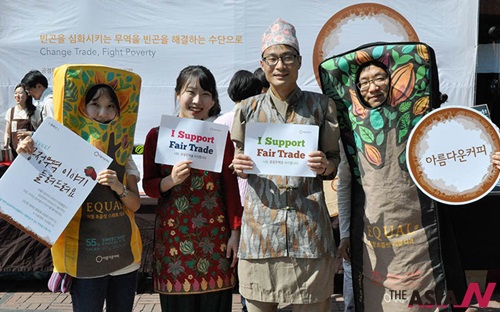Should We Leave Fair Trade As It Is?

Every now and then in a coffee shop, we spot a product labeled “Fair Trade Product”. Fair trade is definitely a growing trend, though Asia is far behind European countries where the market size is already substantial. It is keeping up steadily, with diverse vibrant organizations promoting the good cause. As for the consumers, their job is to buy the products and smugly smile over our coffee that tastes of justice and equity. But don’t feel guilty in gloating – that self-satisfaction that you are a socially conscious consumer and have just improved the life of a poor farmer is what blows life to the movement.
Well, I’m sorry to tell you that you may be wrong. You are probably right that you are a socially conscious consumer, but not quite about improving the poor’s lives. Simply put, the truth is that fair-trade may not be as helpful to reducing poverty as perceived by our society. Scholars have not reached a consensus as to whether fair-trade has substantial effects or only minuscule tremors. Development economists mostly agree that fair trade is one of the least affective means for reducing poverty. Someeven contend that it does more harm than good. Here are some of the questions that cast a shadow on the movement.
Fair trade, in the end, inevitably involves companies that seek profit, but the system lacks transparency. A premium of $0.20 over the world coffee price is purported to be used for social and economic investments at the community and organizational level, but how the money is used remains shrouded. California State University economist Colleen Haight argues that much of the premium is used for coffee cooperatives’buildings and salaries.
Another major criticism is that fair trade only benefits a small number of farmers at the costs of damaging other farmers who comprise the majority. Those left out of fair trade are worse off since protection of one area in a market weakens the rest. Philips Booth makes an argument on this in a 2005 talk, pointing out the damage to the employees of large producers when fair trade shifts away demand from them.
Moreover, fair trade helps farmers in less impoverished countries. Adam Smith Institute reports that though Mexico is the biggest fair trade producer, responsible for 25% of fair trade coffee, it is relatively a prosperous country that doesn’t need as much help in developing. So are India, South Africa, and Columbia, who respectively have 49, 38, and 34 fair trade certified producer organizations while Burundi has none, Ethiopia four, and Rwanda ten. Furthermore, there is a huge gap between how much agriculture means to each country in the first place. While in Ethiopia, 80% of the population work in the fields, only 18% do in Mexico.
There is also a problem of how much of the premium actually goes to the farmers. In a best-case scenario for fair trade when a median coffee drinker is willing to pay 50 cents more, the highest the farmer would get is one third of a cent.
This is not to say that fair trade should be put to a stop. There definitely has been real progress in many projects and those should be heartily applauded. However, fair trade as a whole is suffering from several illnesses that may inflict more damage if we continue to move on simply for the good cause. It is notable that fair trade has raised much awareness through immense marketing, but if effort and money are redirected from other effective programs, the purpose may be undermined. What you must do is to distance yourself from losing the ability to question the results of a good cause. Before you pay more for that latte, consider how else that money could be used if you really care. Buying the fair trade latte may be the right decision, but as long as questions and doubts remain alive in our thoughts and conversations, improvements will be made.
By Chang Hun Lee, Korean Minjok Leadership Academy



